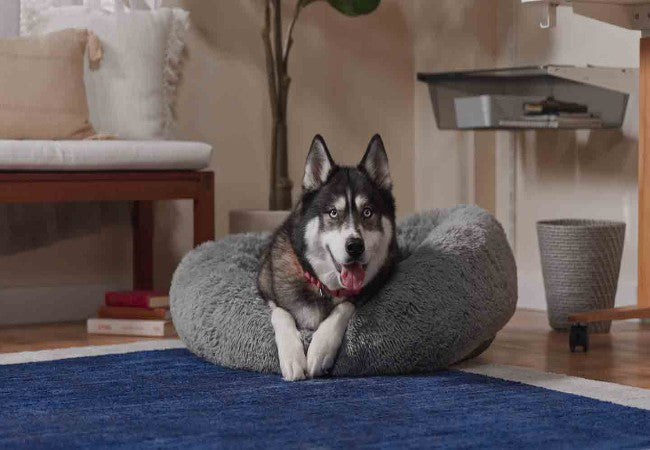Vet Guide to 2025: How to Calm an Anxious Dog — Proven Methods, Safe Tools & Expert Tips 🐶🩺

In this article
Vet Guide to 2025: How to Calm an Anxious Dog — Proven Methods, Safe Tools & Expert Tips 🐶🩺
By Dr. Duncan Houston BVSc
Anxiety in dogs can stem from many causes—thunderstorms, vet visits, separation, or change in routine—but you can help your pup feel safe, calm, and supported. I’m Dr Duncan Houston BVSc, and this comprehensive guide walks you through practical strategies, science-based tools, and true veterinary support with Ask A Vet. Let's help your dog breathe easier in 2025 and beyond! ✨
1. Recognize Triggers & Early Signs of Anxiety
- Identify common stressors: thunderstorms, vet visits, separation, new environments.
- Spot early cues: lip licking, yawning, body shifting, panting—even before barking or hiding.
- Track when they occur—keeping notes helps your vet form a clear assessment.
2. Remove or Reduce Stress Triggers
- If fearful around other dogs or people, avoid crowded parks—opt for quieter outings.
- Crate training helps provide a known sanctuary for travel or separation anxiety.
- At vet visits, stop in just for treats once a week to build positive associations.
3. Create a “Safe Space” Haven 🏡
- Designate a quiet area with their crate or calming den; use white-noise machines or music during storms.
- Include favorite toys, blankets, pheromone diffusers, and soft lighting—build comfort tools into routine use.
- Teach “go to your place” via gentle reward training—this builds calm on cue.
4. Exercise & Mental Enrichment
- Regular physical play and walks release pent-up energy and improve mood.
- Use puzzle toys, hide-and-seek games, or gentle obedience sessions to stimulate mentally.
5. Use Calming Aids & Tools
- Pheromone collars and diffusers (e.g., Adaptil, ThunderEase) work by mimicking mother-dog signals.
- Thundershirt–style calming wraps provide gentle pressure, similar to swaddling relieved anxiety.
- Calming chews with melatonin, L‑Theanine, chamomile repurpose mood-boosting pathways—fast-acting within 30 min.
6. Behavior Modification Techniques
- Desensitization + counterconditioning help reframe triggers—from fearing to expecting rewards.
- Train a “settle” or “place” cue in low-stress moments, then reinforce it during anxiety-inducing events.
- Remain calm and neutral—never punish anxious behavior, as this worsens fear.
7. When Medical or Professional Help Is Needed
- If anxiety persists or worsens, consult your veterinarian to rule out underlying conditions.
- Veterinarians may prescribe SSRIs, benzodiazepines, or alpha-2 sedatives when appropriate.
- Board-certified behaviorists offer advanced support through customized training plans and refinements.
8. Support from Ask A Vet,
- Ask A Vet – Share videos and history through the app for rapid, expert-tailored calming plans and medication guidance.
9. Monitoring Progress & Reassessing
- Track incident logs: what triggered the event, duration, and steps taken—review weekly with Ask A Vet.
- Adjust tools and techniques based on progress—some dogs need ongoing support; others adapt quickly.
- Continue reinforcement even after improvement to prevent relapse—consistency is key.
10. FAQ
- Q: Can I use pressure wraps and medication together?
- A: Yes—calming aids enhance training and can reduce the need for medication over time.
- Q: How long before a chew's effects kick in?
- A: Effects typically begin in 20–40 minutes and last 3–4 hours, perfect for storms or vet visits.
- Q: My dog hates crates—is forced caging harmful?
- A: Only train it gradually with rewards; never place dogs unwillingly into crates without consent.
- Q: What about separation anxiety?
- Blend exercise, safe place protocols, desensitization, and chews. Medication helps in severe cases.
Conclusion 💡
Calming an anxious dog involves understanding triggers, creating positive routines, using evidence-based tools, and knowing when to escalate to professional help. With behavior strategies, targeted calming aids, and expert guidance via Ask A Vet, you can transform your dog's stress into serenity. Here's to calmer days and peaceful nights together! 🐾❤️






